This past spring, OAEC and the Sowing Circle community were thrilled to graze a flock of 54 sheep and 12 goats across nearly 10 acres of coastal prairie and meadow on-site to support our goals of fire abatement and coastal prairie restoration. Partially funded by the Gold Ridge and Sonoma Resource Conservation Districts’ (RCDs) LandSmart Grazing Program, OAEC partnered with our two western neighbors along Coleman Valley Road, Two Sisters Place, and Mighty Arrow Ranch, and methodically moved the herd across all three parcels for a larger landscape effect. Collaborating across fencelines enabled us to graze a larger contiguous area of 26 acres to not only better serve our wildfire mitigation and restoration goals, but also share the up-front costs like water infrastructure and animal transportation.
The sheep arrived in late May on a trailer from Bodega Pastures, a 1,000-acre sheep ranch specializing in grass-fed lamb and organic wool that is based in the nearby coastal hills of Bodega. Their hardy flock is a mix of Columbia, Corriedale, Romney, Suffolk, Wensleydale, and Navajo-Churro breeds and is locally adapted to our bioregion. It was the first time these animals had ever left their home at Bodega Pastures for a contract grazing project. We also collaborated with John O’Mara, who offers small-scale grazing services to the community, to manage and shepherd the flock along with his small herd of goats in targeted areas of OAEC’s prairies.
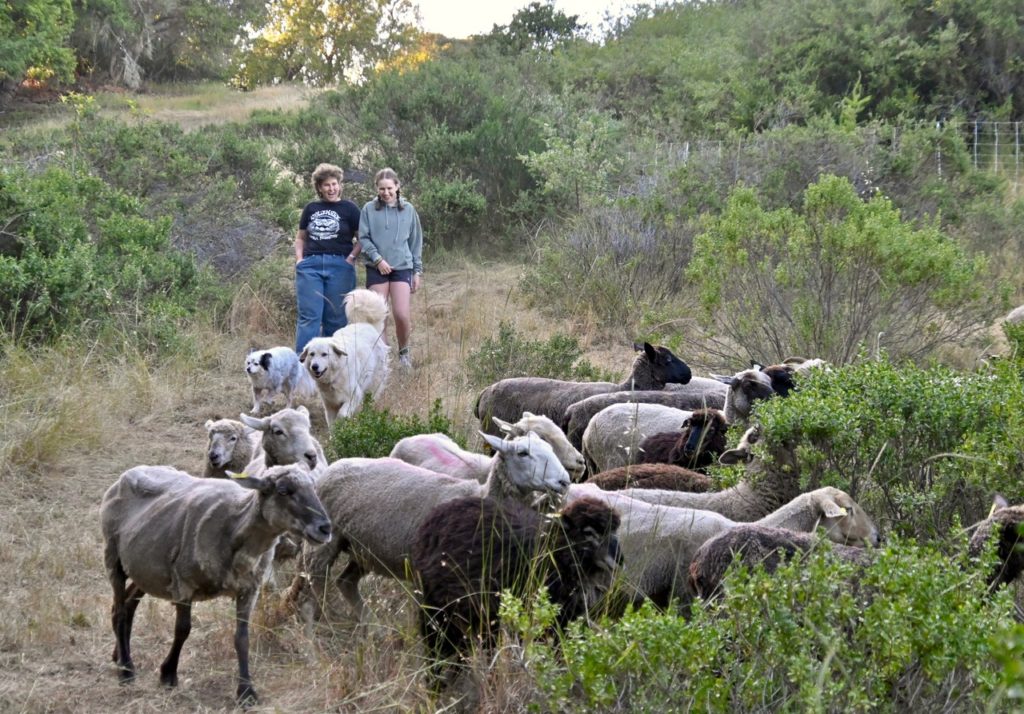
We couldn’t have done this project without support from the LandSmart Grazing Program, a pilot launched last year by Gold Ridge and Sonoma RCDs that offers incentive payments to support community groups to use targeted grazing to reduce the risk of wildfire and support healthy rangelands. This program was funded by Ag + Open Space via PG&E settlement funds and utilizes UC Cooperative Extension’s Match.Graze tool to connect contract grazers with herds for hire to landowners. Under this cost-share program, 85% of our group’s grazing costs – from hiring our contract grazier, John, to manage the flock, to transporting the animals to and from the site – were covered up to a $20,000 cap. OAEC, Two Sisters Place, and Mighty Arrow Ranch then provided a match by splitting the remaining costs proportionate to our project acreage.
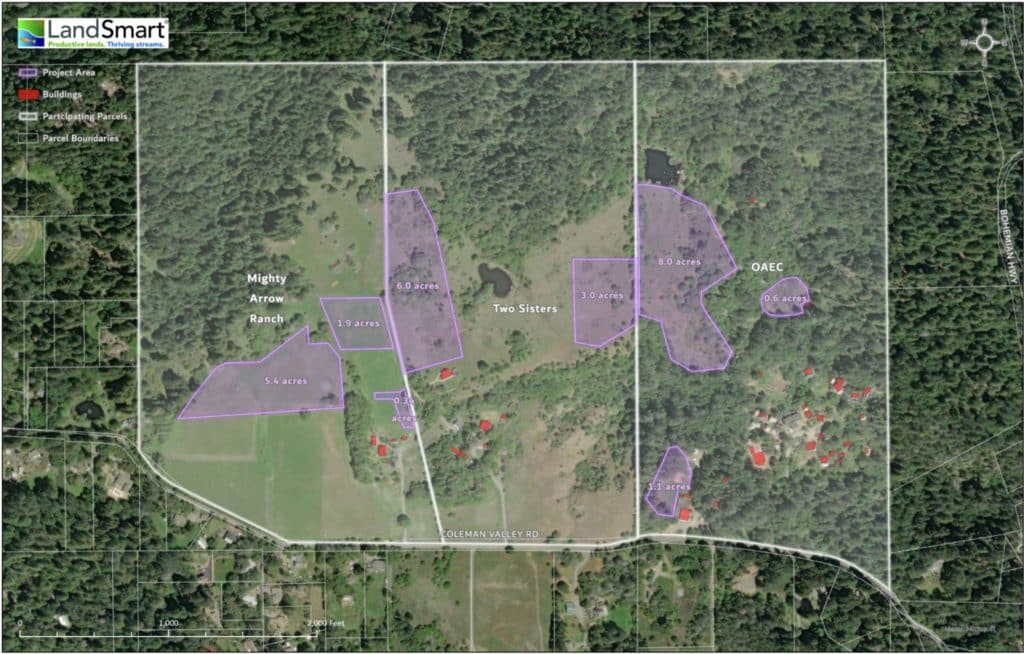
In addition to financial support, Gold Ridge RCD also helped shepherd us, landowners and project partners, through the planning process. With a menagerie of sheep, goats, herding and guard dogs (not to mention humans), there was certainly a lot of prep to be done and important details to think through! One key discussion point revolved around how to get the animals sufficient water; for OAEC and Two Sisters Place, we drew from OAEC’s agricultural pond through either a hose when available into a standing water trough or an electric solar pump into a 400-gallon plastic tank that we hitched onto a small truck trailer. Using a rough estimation of 1 gallon/day per sheep, we calculated that we would use about 850 gallons of water for ~17 days (a very small drop in the bucket given our pond’s holding capacity of one million gallons when full). Another piece of keeping the animals safe and healthy was protecting the herd from predation, especially at night, which John helped us solve by setting up a blinking colored light system that ran off a solar battery and bringing along a guard dog to keep the flock company and keep predators away. A major source of John’s time and energy was also setting up moveable electric fencing to keep the animals in a particular area and control the intensity of animal impact over time. In the end, despite a few sheep and dog escapes, these systems worked really effectively!
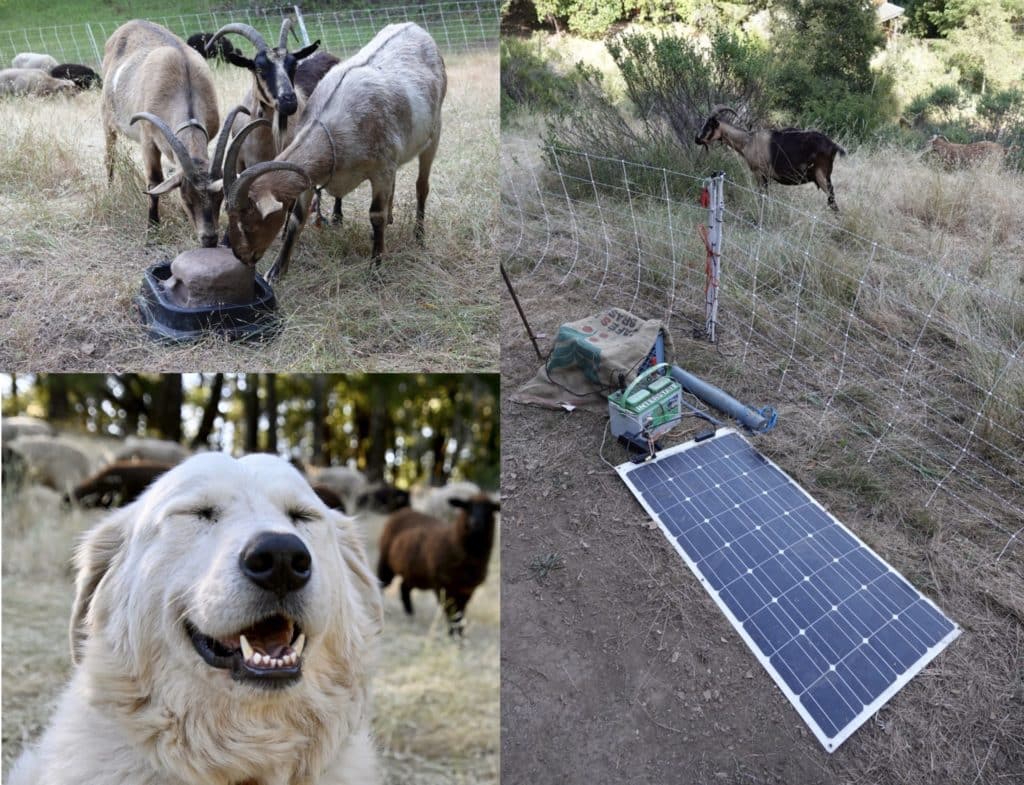
Each of the three landowners came to the project with a unique set of goals and desired impact, though top of all of our lists was reducing vegetation to mitigate wildfire risk. For OAEC, this program also enabled us to experiment with grazing to continue our “mending the wild” approach towards restoring our few remaining coastal prairies on site. California coastal prairie is a grass and forb (an herbaceous flowering plant) plant community that are different from grasslands because of their floristic diversity. They are celebrated for their biodiversity, containing twice as many species as any other prairie ecosystem in North America (Stromberg et al. 2002). Sadly, 24% of coastal prairies in the U.S. have been lost to pavement (Loveland, 1995), placing coastal prairies among the most endangered ecosystems in California.
Coastal prairies are “disturbance dependent,” as many grassland plants have co-evolved over time with disturbances like fire and grazing, which prevent shrubs and trees from invading surrounding areas and converting prairies to shrubland or forest. Over time, the precious balance of coastal prairies has become severely threatened due to substantial changes in these disturbance patterns, including: the displacement of Coast Miwok and Southern Pomo land stewards and the removal of fire from the landscape; changes in natural herbivory patterns of native ungulates (mammals with hooves) such as elk, deer, and pronghorn; the overgrazing of non-native domesticated livestock; agriculture and urban development; and the introduction of non-native plants. Historical aerial photographs of OAEC dating back to 1953 show a steady shrinking of the total surface area of coastal prairie, as surrounding Douglas fir, coyote brush, and invasive broom drop their seed and multiply deeper and deeper into the prairies. Without active management, coastal prairies at OAEC would completely disappear in a manner of decades!
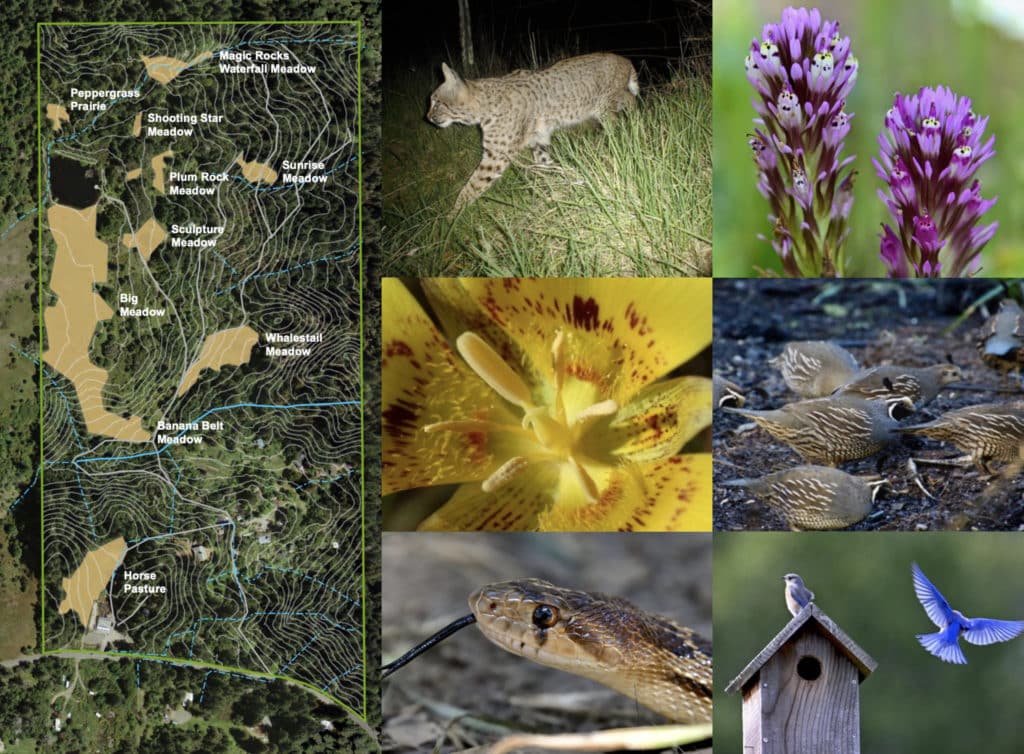
Over the past 25+ years of stewardship, OAEC has sought to bring right balance back to our coastal prairies by employing a combination of creative “regenerative disturbance” strategies, including mowing, mechanical forest thinning, “shuck-n-huck” seed saving and sowing, and prescribed burning to mimic the historical disturbances that once maintained the prairie’s mosaic of biodiversity. Although mowing and weed-whipping can successfully mimic historical grazing patterns in some ways, these machines use fossil fuels and don’t add nutrition or life back into the soil. In contrast, animal impact (browsing, grazing, trampling, urinating, dunging, etc.) can reintegrate carbon material and nitrogen fertilizer back into grassland ecosystems to help rebuild a robust soil food web and – if done at just the right time – can help tilt the seed bank composition from invasive annuals to native perennial grasses and forbes.
While we were striving for these many beneficial impacts, we learned through this project that regenerative grazing is a humbling and complex dance of right timing, skilled management, partnership with the animals, and many other factors outside of our control, like climate. Overall, from a vegetation management perspective, the project partners were happy with the amount of material removed and thatch (old, dry plant material) leftover from both consumption and hoof impact. Another huge success was the amount of nutrients composted back into the ecosystem with nearly 200 pounds of manure distributed across the landscape per day! One challenge we discussed in a recent post-project debrief was balancing the intensity and frequency of animal impact; with overgrazing on one end of the spectrum and undergrazing on the other, we sought to achieve what OAEC Wildlands Program Director Brock Dolman calls a “Godilocks grazing” effect, enough pressure to achieve the aforementioned benefits while also allowing the ecosystem to bounce back. The group also shared the observation that we were a little late in the season and that perhaps a month or two earlier, we may have had a greater impact in areas where grasses had already gone to seed and in some cases turned brown.
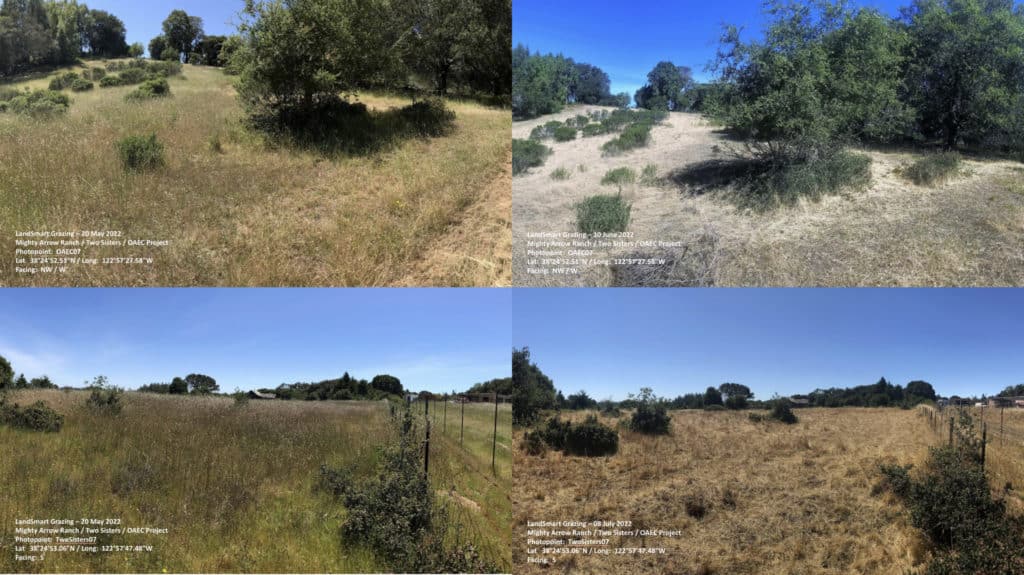
Ultimately, we are all excited to have participated in the first year of this new public program and super grateful to the Gold Ridge and Sonoma RCDs for creating accessible options for land owners and managers to reweave animals and the time-honored art of grazing back into more fire-resilient landscapes. As Christopher Szecsey of Two Sisters Place shared, we have to get out of the fragmented mindset of “saving” singular properties from wildfire and move towards a more collaborative model of stewardship at a landscape scale. Beyond that, this project presented an exciting opportunity to work together as neighbors and not just “think like a watershed” but a “fibershed,” in which we can create mutually beneficial, life-sustaining systems that support the people, the land, and our regional economy of local graziers and ranches.






